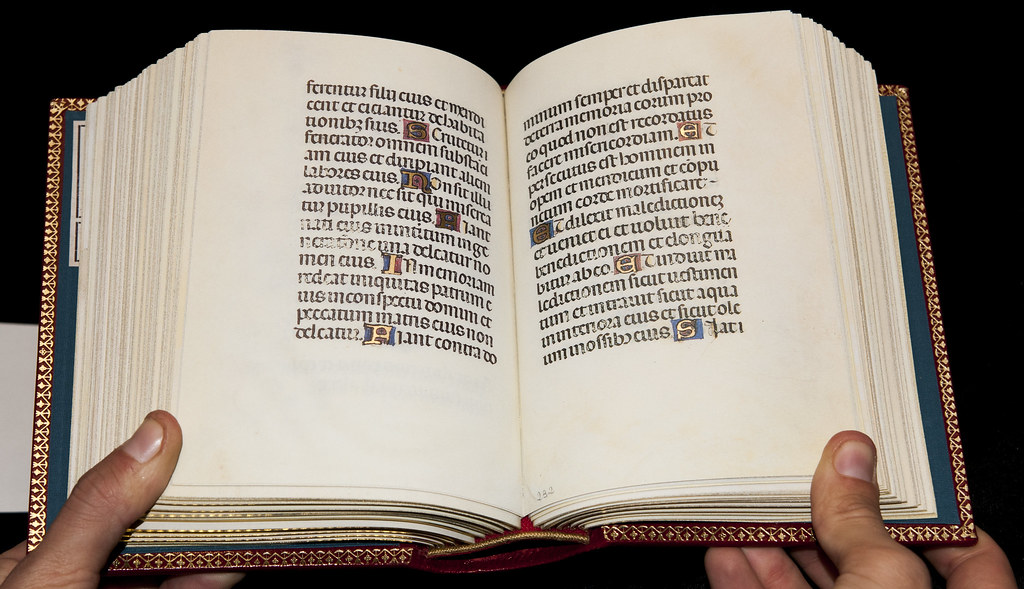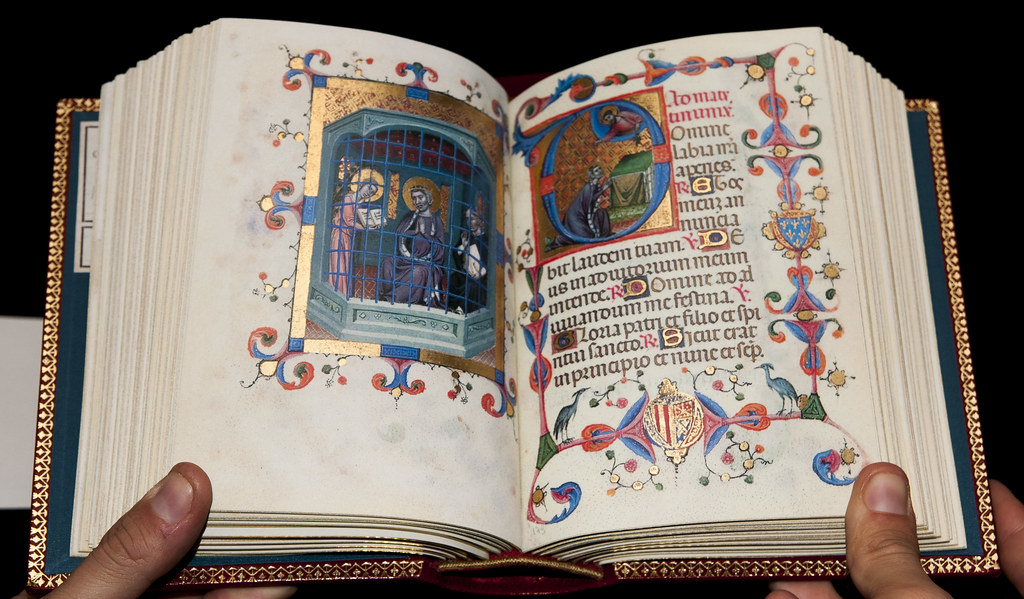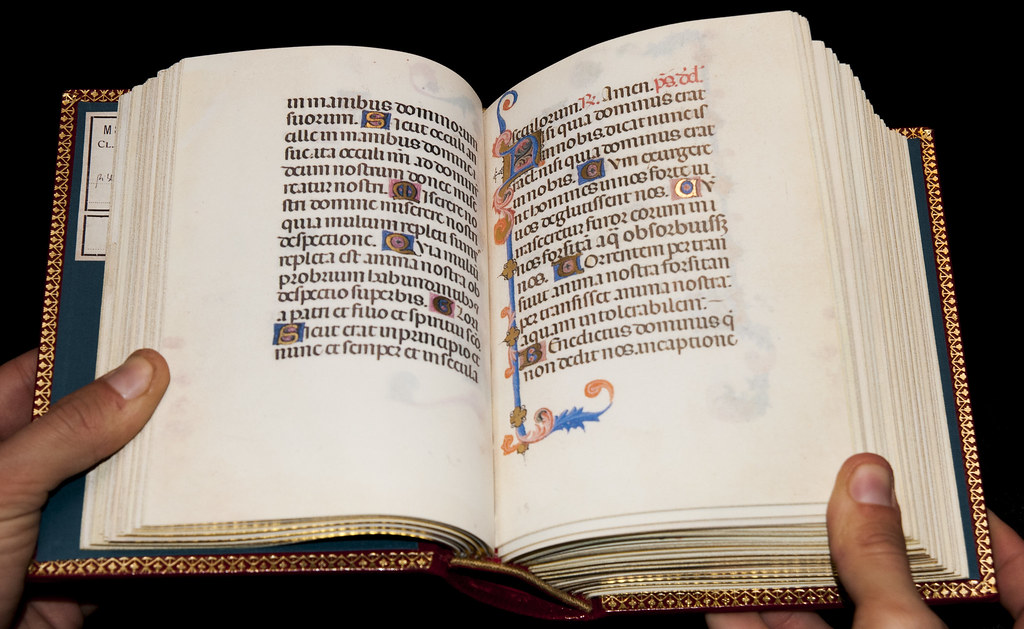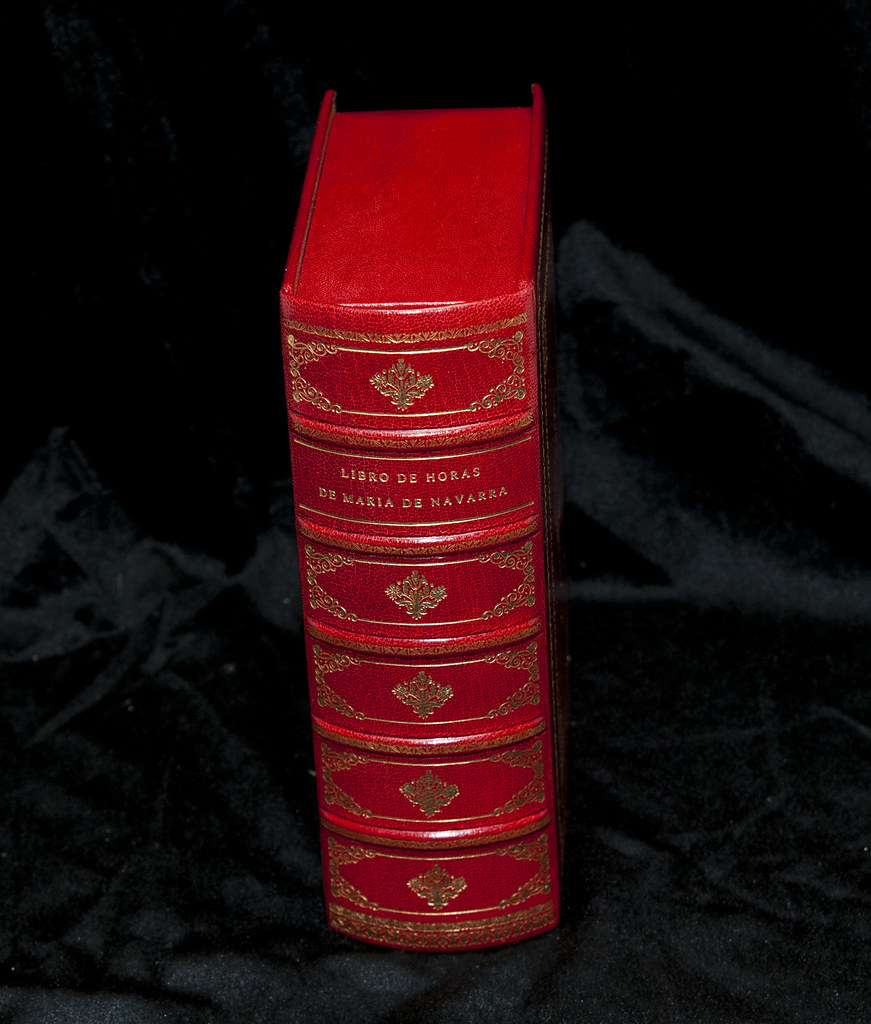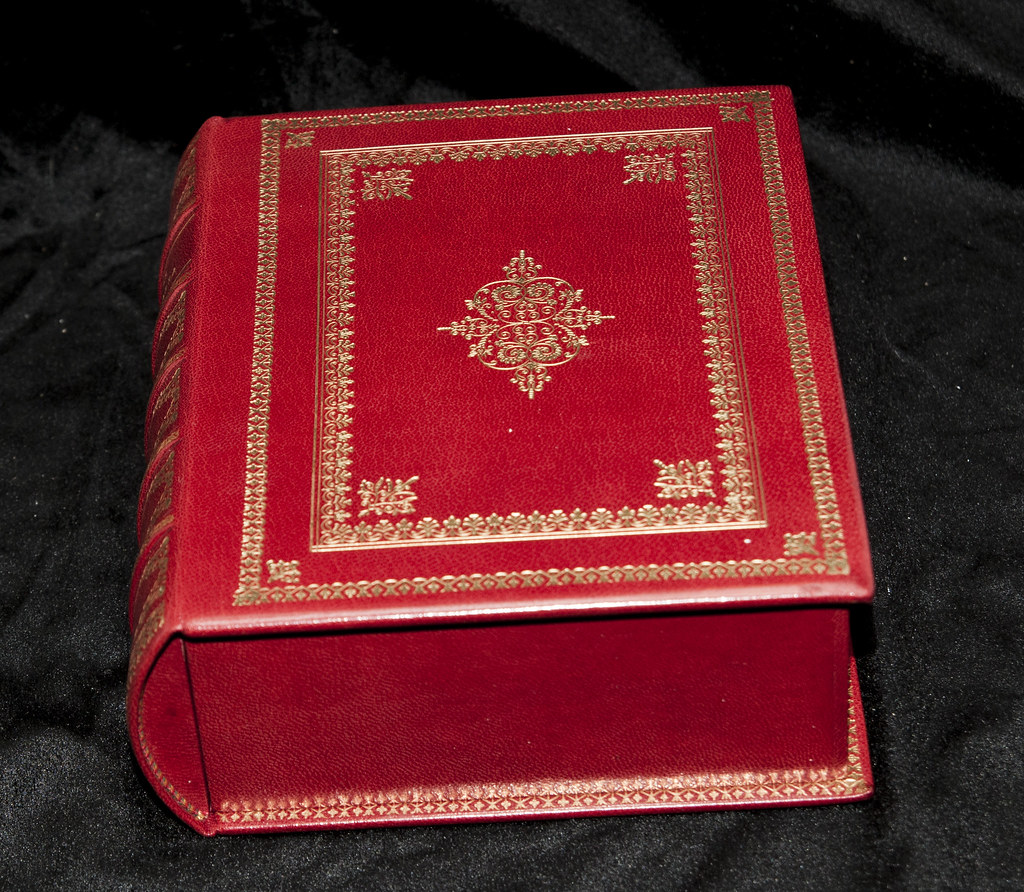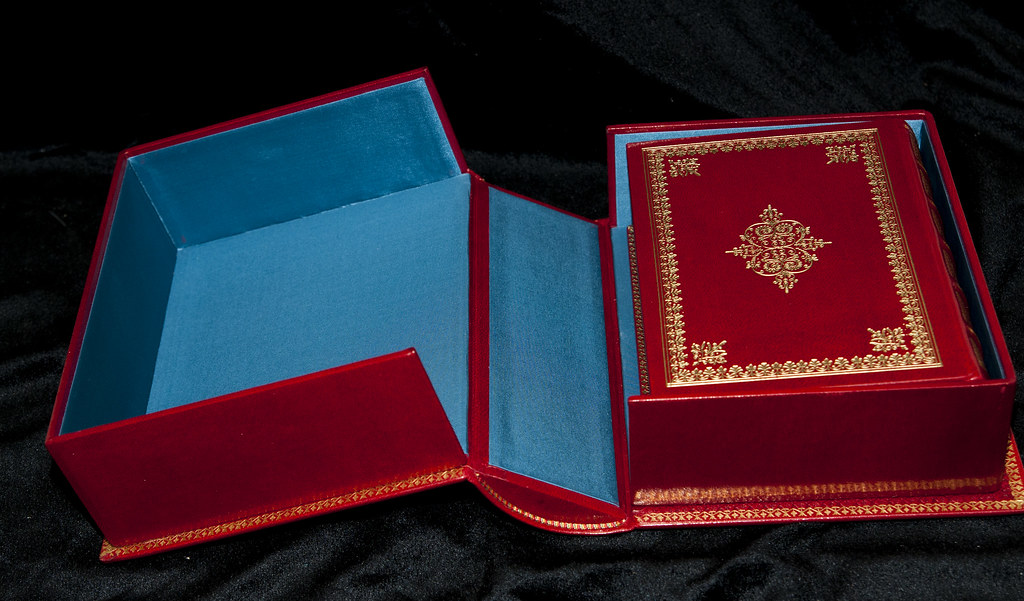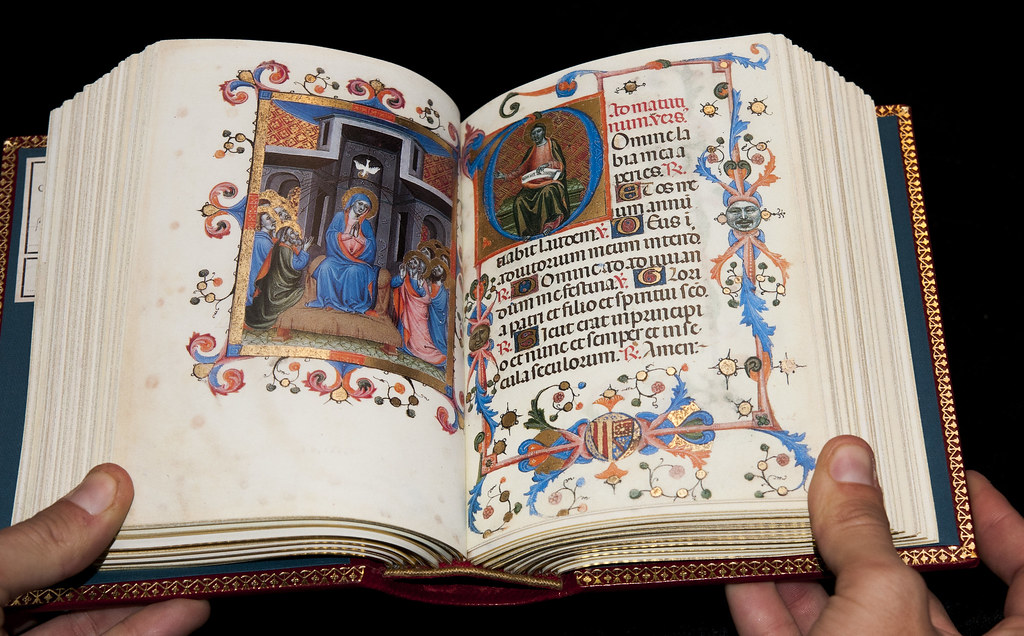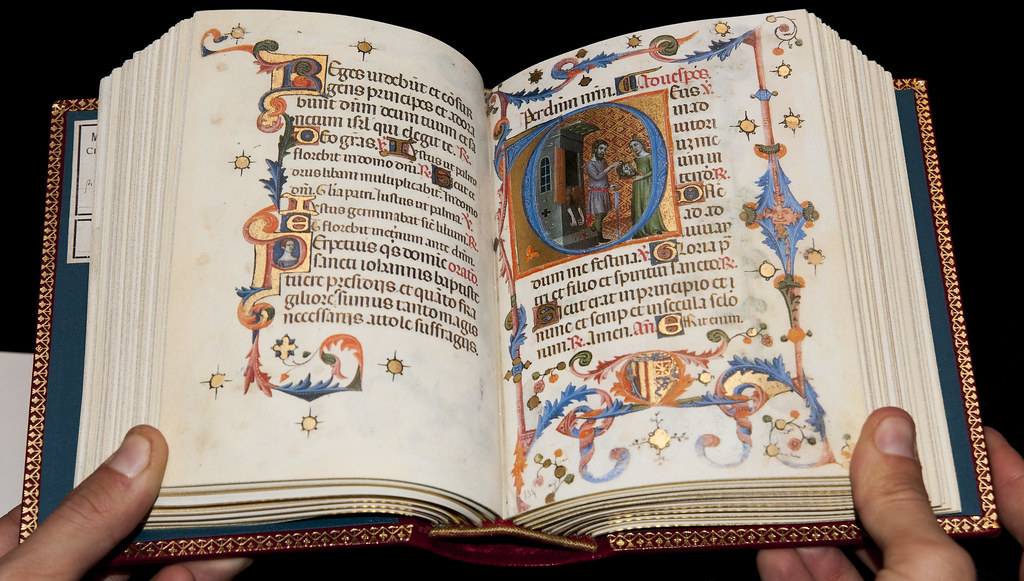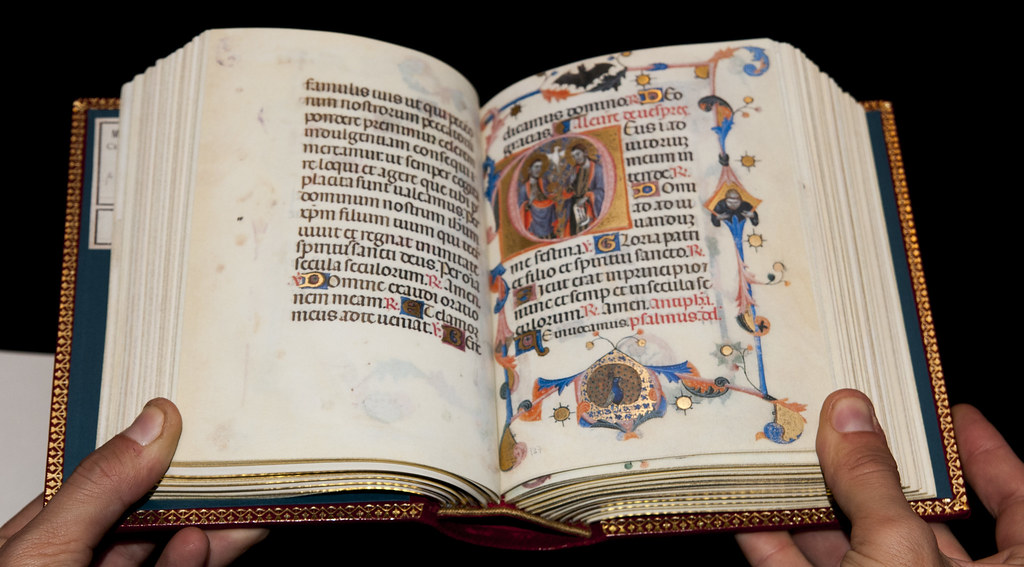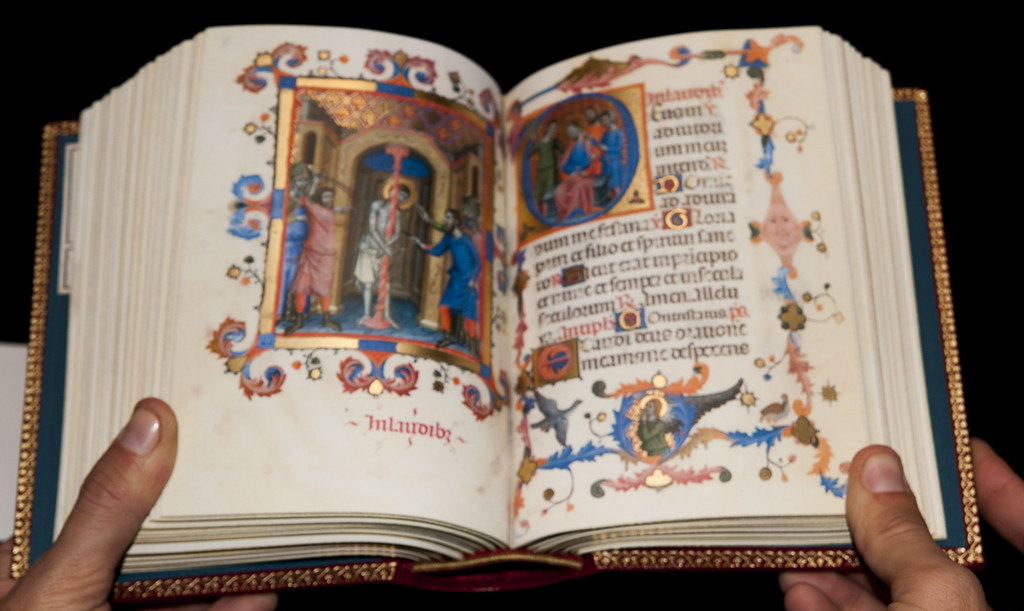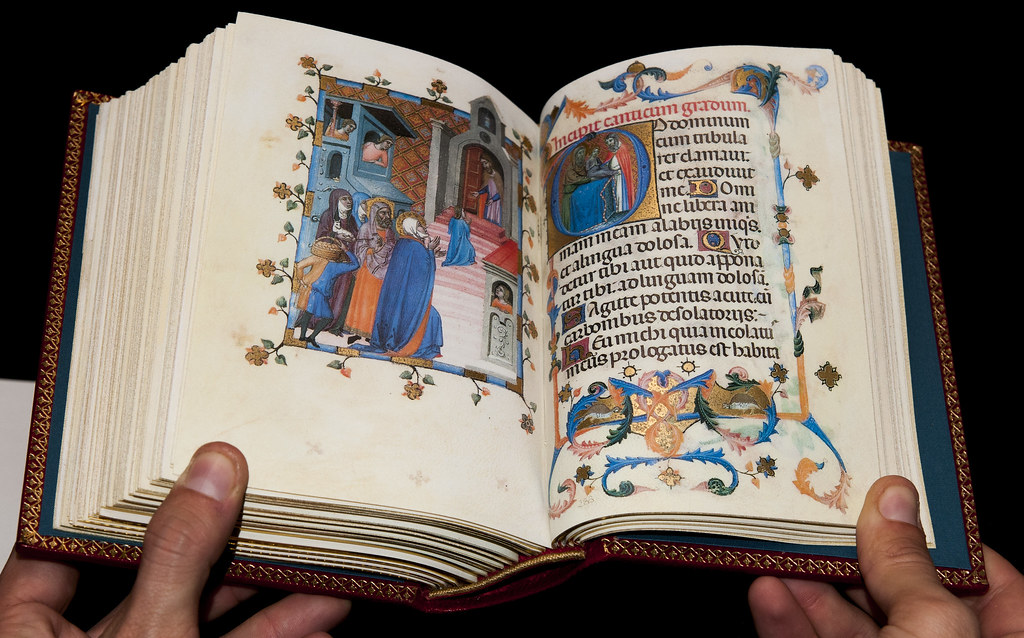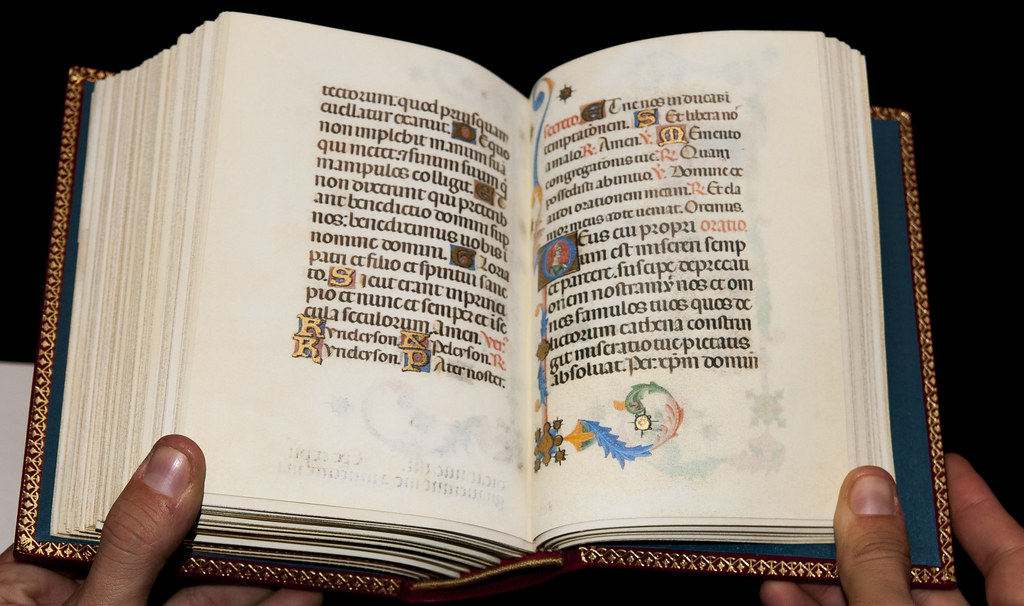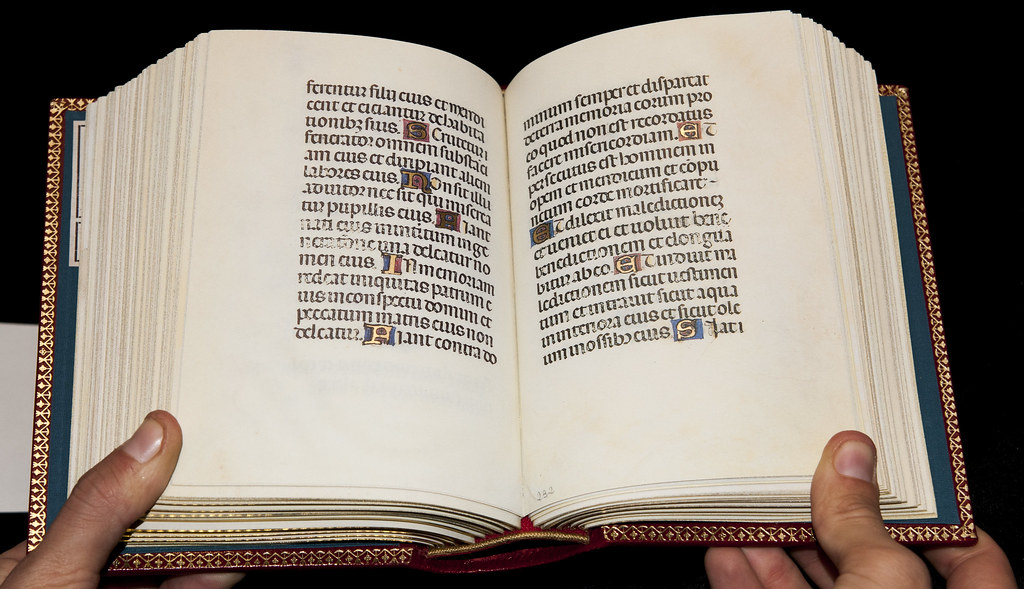The Book of Hours of Mary Queen of Navarre has been considered the first representative, fascinating and precocious, the internationalism of culture. In illustration luxurious and generous wealth of content with almost exclusive liturgical offices, as hours in honor of his direct ancestor, St. Louis joins.
The April 26, 1342, Pedro of Aragon, asks his wife Mary Queen of Navarre, to send it as soon as possible, from Valencia, the beautiful Book of Hours painted by Ferrer Bassa (pulcriores pray ... quas depinxit Pferrarius Bassa). This paper shows that the admiration for this exceptional work of art is long and was not exclusive of the King, for his thoroughness, attention to detail and perfectionist zeal, is known by the nickname Ceremonioso.
In the next picture you can see the affidavit certifying the authenticity of the fax, and in this case, the number of single shot 737 reduced to 987 copies.
In the Book of Hours of Maria of Navarre treatment of space and the use of rich and delicate hues is particularly noteworthy. Defining characteristic of the artist is the way to portray the faces of the characters straight, pointed nose, with piercing eyes, kind that will last for many years in the painting of the territories of the Crown of Aragon.
The painted scenes in this magnificent manuscript evidence the Sienese influence to soften the plastic language imposed by Giotto, to introduce the music and vitality of gothic drawing: the softer forms and more harmonious compositions.
The intimate details and family, coupled with great sensuality deployed in the representation of the materials, make the codex, preferred by Pedro of Aragon, in the masterpiece of Ferrer Bassa, his masterpiece, the culmination of his art. The perfect example of how the artist used eclectically different influences and personal without being labeled by any of them, forging a personal, original and unmistakable style.
The Book of Hours of Maria of Navarre will also have the honor of being the first book of hours painted on the Iberian Peninsula.
The Book of Hours of Mary Queen of Navarre a book of Gothic illuminated miniatures made in Barcelona Custom reyPedro the ceremonious towards 1342, as a wedding gift from his first wife, Maria de Navarra is. Its author is Ferrer Bassa, according to the royal commission, although stylistically two artists over his workshop, his son Master Arnau Bassa and Baltimore are identified.
The work has abundant illustration that complements the richness of the liturgical content, almost unique features, such as hours in honor of his direct ancestor, San Luis. In the images the treatment of space and the use of live and delicate colors is emphasized. The defining characteristic of the artist's style is the way to show the faces of the characters, with a few pointy noses and eyes penetrante.1
The copy of the Book of Hours is now in the Marciana Library Venecia.2
When the Crown of Aragon reigned king Alfonso Benigno , were crowned kings of Navarre in 1328 the marriage of Joan II of Navarre and Philip of Évreux , these followed a policy of matrimonial alliances for their children to achieve their political objectives. March 4 Navarra had territorial tensions with the Kingdom of Castile and of these alliances was with the Crown of Aragon to ensure their neutrality in case of conflict with the Spaniards . Thus the kings of Navarre in 1329 a pact with King Alfonso , the marriage of his eldest daughter, Juana Evreux , his son Pedro ten years , future king of Aragon , but finally Juana entered as religious in Abbey of Longchamps near Paris and founded by his ancestor Elizabeth Francia.4 3 This did change plans and pledged their second daughter, Mary, with Peter of Aragon , who had succeeded his father , by a capitulation signed on January 6, 1336 in castle document Anet.3 a dowry of £ 60,000 sanchetes stipulated to pay in installments by the Navarrese king Peter and the residence of Mary Tudela was fixed until it had turned twelve old.5 transfer to this city accompanied by his entourage passed through Roncesvalles , Pamplona, Olite, and reached Tudela on 23 May 1338.6
King Peter had prepared a series of wedding gifts, among which was a crown, six rings with emeralds, rubies and diamonds. Also gave him the deTarazona, Jaca and Teruel towns with their rents and salaries 150,000 year.7 Barcelona was, however, concerned about the dowry that never came and after many failures and finished paying claims Queen Juana when her husband, King Philip had died in 1343.8
The marriage was held in Zaragoza, but Mary felt unwell during the trip and stopped at Alagon. Peter, who had already accepted several delays the date of the wedding, sent for the Bishop of Châlons and July 25, 1338 a ceremony was held at the same Alagon, Mary became the first of his four esposas.8
The first attributions of authorship made by Santiago Alcolea Blanch aimed exclusively Ferrer Bassa subsequently Alix-Saulnier Pinsard proposed Master of San Marcos as principal accompanied by an assistant not identificado.9 In the last decade of the twentieth century and Rosa Alcoy Joaquín Yarza published two studies on the work, from the analysis of the different stylistic and stylistic comparison with other works of the authors agree in identifying the intervention of three miniaturists who are responsible for homogeneous groups made representations within the book .10 This is not a simple hierarchical shop assistants, but the work is the result of work with an interdisciplinary team participation, supervision and coordination of the master principal.11
The three artists responsible for the bill for this work have been Ferrer Bassa , his son Arnau Bassa and the Master of Baltimore , a member of his workshop.
Ferrer Bassa shop teacher , was a painter known for his work as a painter and miniaturist of the king of the Crown of Aragon. Franco left the original Gothic influence and other painters of the Crown of Aragon, was influenced by the Florentine school and the Sienese school, why it has been called the ' Catalan Giotto . " However, it is believed that his " giottismo 'is a direct influence of the Florentine school , but the brothers Pietro and Ambrogio Lorenzetti which imported the style of Giotto from Asíshacia Siena , 2 where it is likely to travel Ferrer Bassa and which have been observed models that influenced him in his obra.12 addition to this book of hours for Mary Queen of Navarre, his work as a miniaturist anglocatalán highlights the Psalter , a work that had begun shortly before 1200 in Canterbury and after a interruption was completed in Barcelona in 1340 by Ferrer Bassa . The original manuscript is preserved in Paris, at the National Library of Francia.2
Arnau Bassa, son of Ferrer Bassa, began to appear associated with his father from 1345 as part of his workshop. His best known work is the altarpiece of San Marcos commissioned December 11, 1346 for the chapel of the guild of shoemakers had in Barcelona Barcelona Cathedral. In 1348 father and son died of the plague of that year.13
Master of Baltimore was a miniaturist and painter nearby unknown identity environment Arnau Bassa, 14, who is known by this name because one of his masterpieces, a triptych with scenes of the Virgin which is preserved at the Walters Art Museum Baltimore, in the United States.15 The historian Rosa Alcoy proposed a theory that identified him with Cascalls Jaume, son of Ferrer Bassa and collaborator in some of his work, 16 although other historians do not agree with this atribución
Documentary about the authorship and custom book is not a contract, as had other works commissioned by King Pedro of Aragon to Bassa, but several payments made between June 1 and September 19, 1340 on account of "Oras and retablos ", an expression that had been interpreted as payments for" works and altarpieces "until a new document of 1342 in which the performance of a Book of Hours by Ferrer Bassa was documented was found, confirming that the term "Oras" was not a mistake of the copyist, but the reference to this book of hours for esposa.18
The document in question is a letter sent by the king on April 26, 1342 from Barcelona Maria , who was in Valencia where asked to send by the first person to travel , " the most beautiful hours , which are a case and were painted by Ferrer Bassa '.19 by the date of completion , it was probably a gift tied to the date of consummation of marriage or when Mary became pregnant for the first vez.18
In the 1980s , the medievalist historian Rosa Alcoy developed a thesis about dating that allowed no fix in 1342 as terminus ante quem and placed the manuscript preparation by the year 1346 , which would explain more reasonably intervention of up to three artists in their clothing . According Alcoy, in his letter of 1342 the king would refer to another book for use by the queen, probably owned by the same king Pedro , and then your request would be to order a new book exclusively for ella.20
After the death of Mary in his fourth delivery, the book probably went to one of his daughters , a common practice as you can see in the documentation of the legacy of his sister and queen of France , Blanche of Navarre, to their daughters when he died a few years later.21
...................................................................................................................................................
Call: Ms. Lat. I 104/12640
Date: c. 1340
Format: 183 x 142 mm
704 pages, 391 miniatures illuminated with gold
Bound in maroon leather embossed in gold
"Almost-original", first, unique and unrepeatable edition strictly limited to 987 numbered and authenticated by a notary
ISBN: 978-84-88526-20-5
Format: 210 x 300 mm
Pages: 600
Illustrations: 64
Language: Spanish
ISBN: 978-84-88526-18-2
Fax number: 737 of 987
PRICE: 5900 €
Contact via this blog or email: Panguitarod@gmail.com
